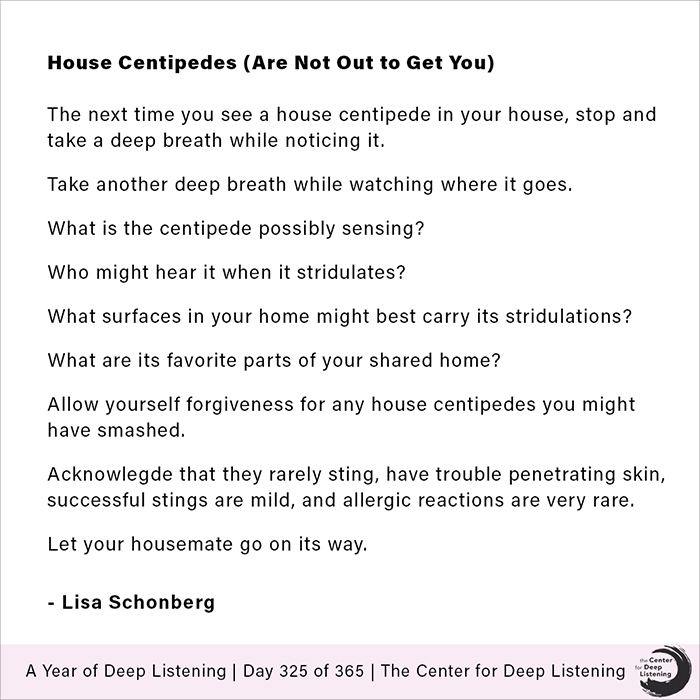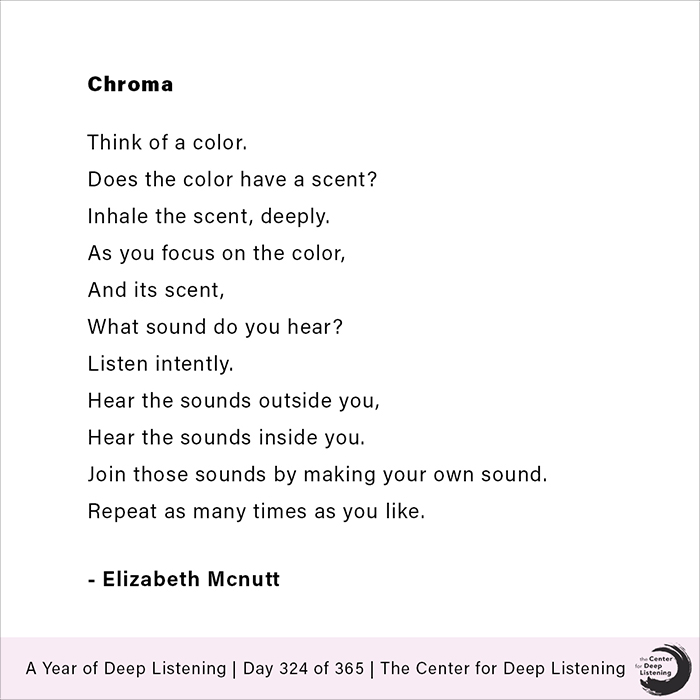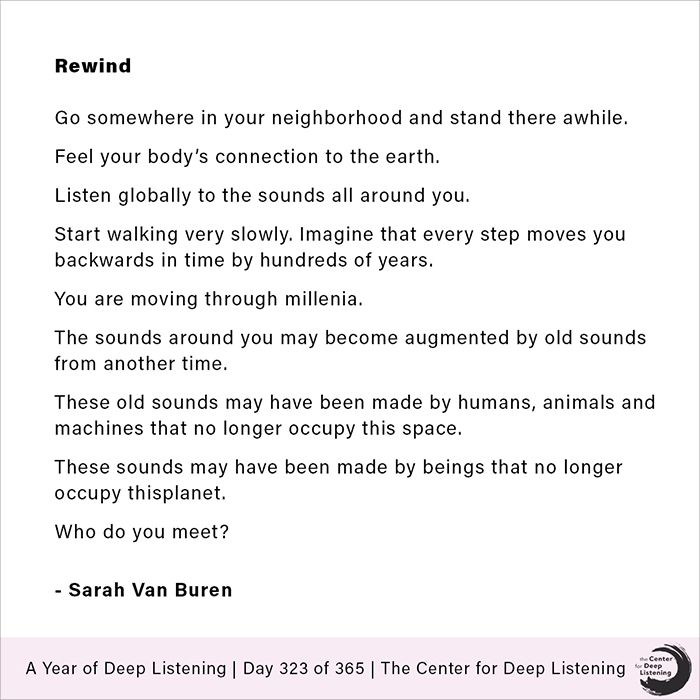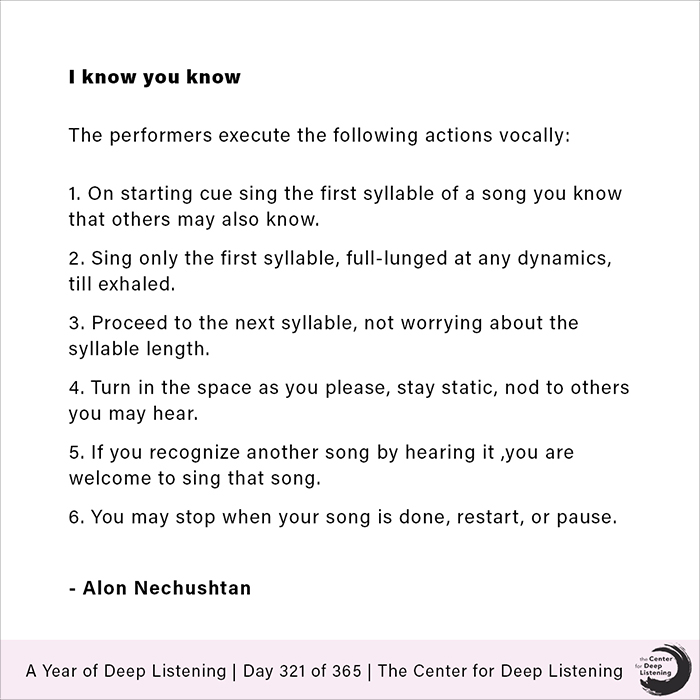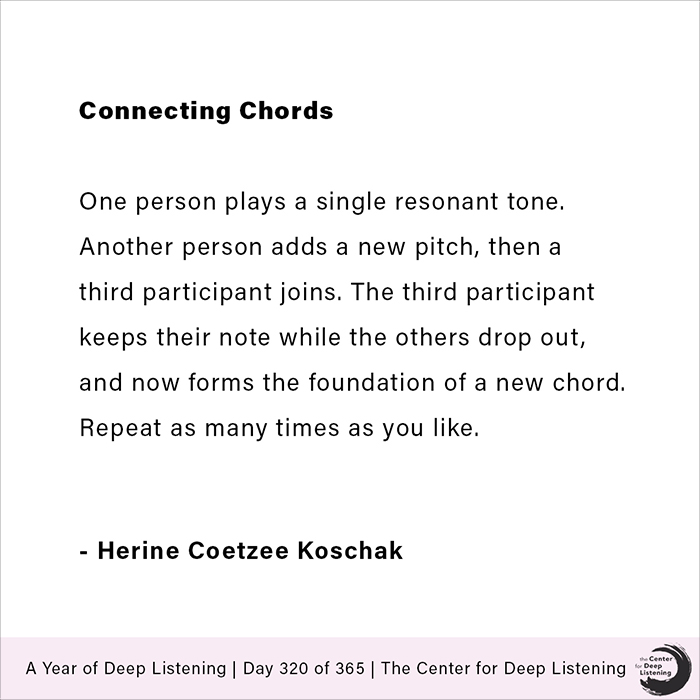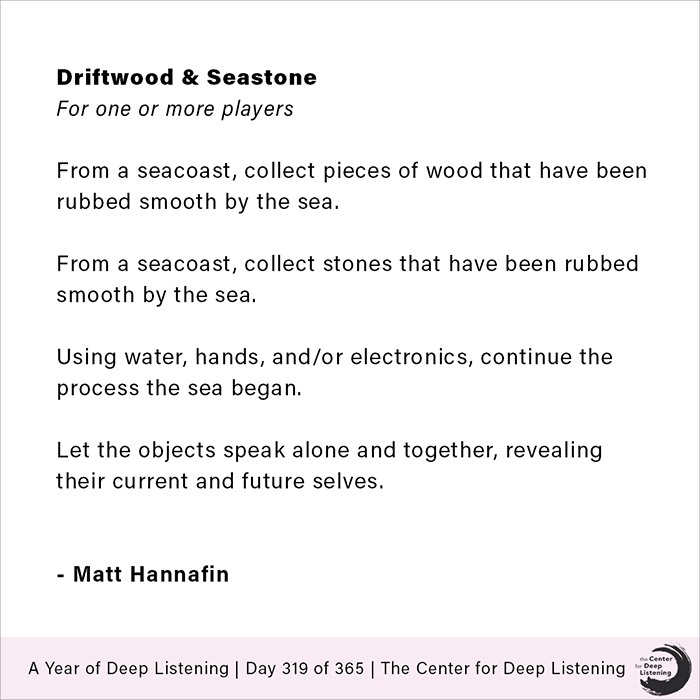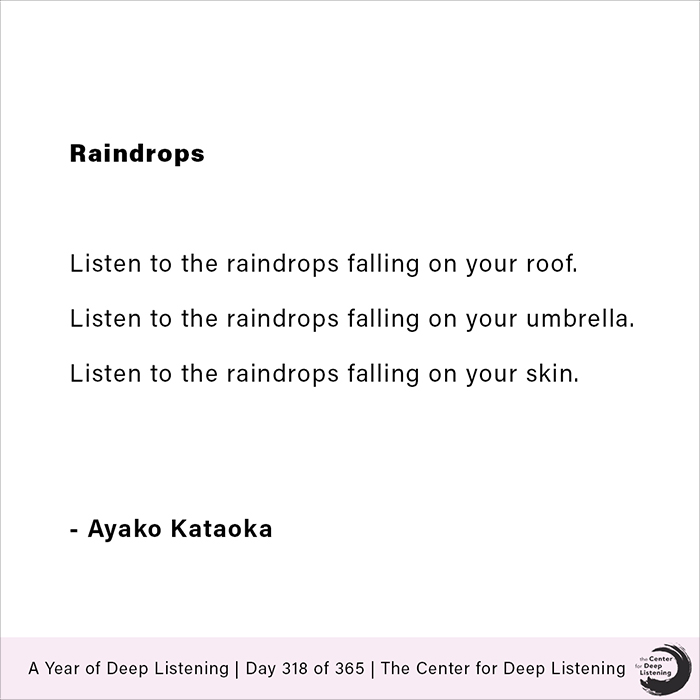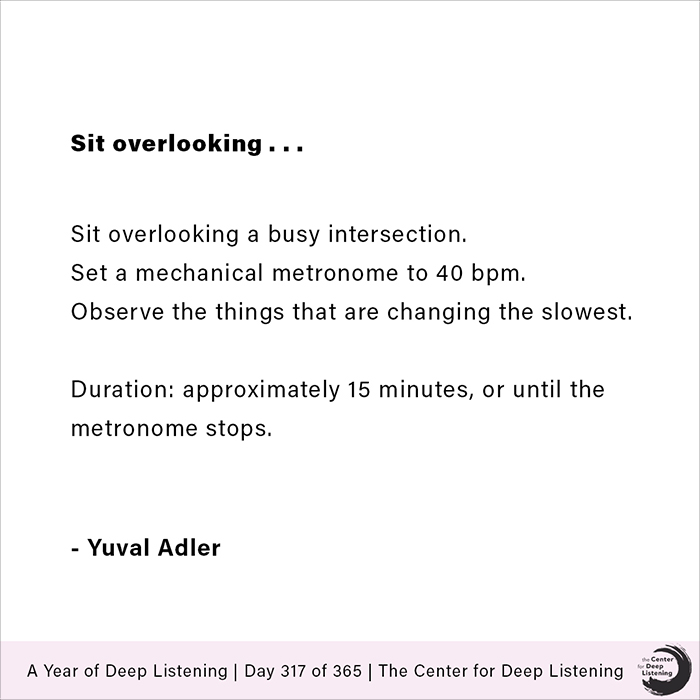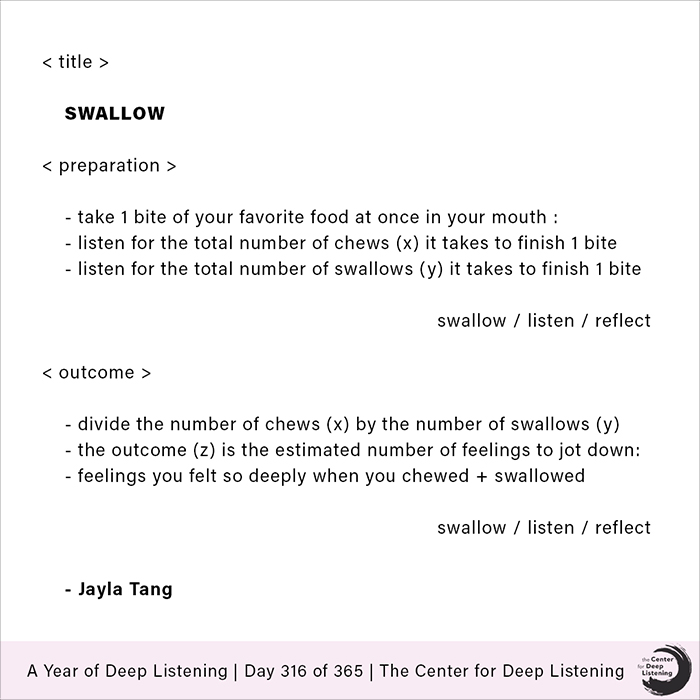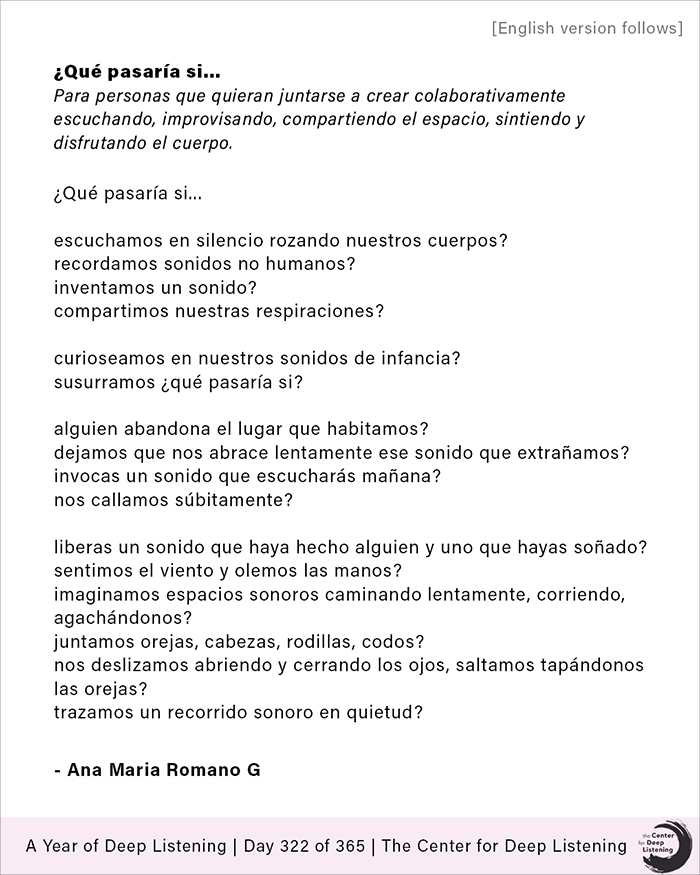
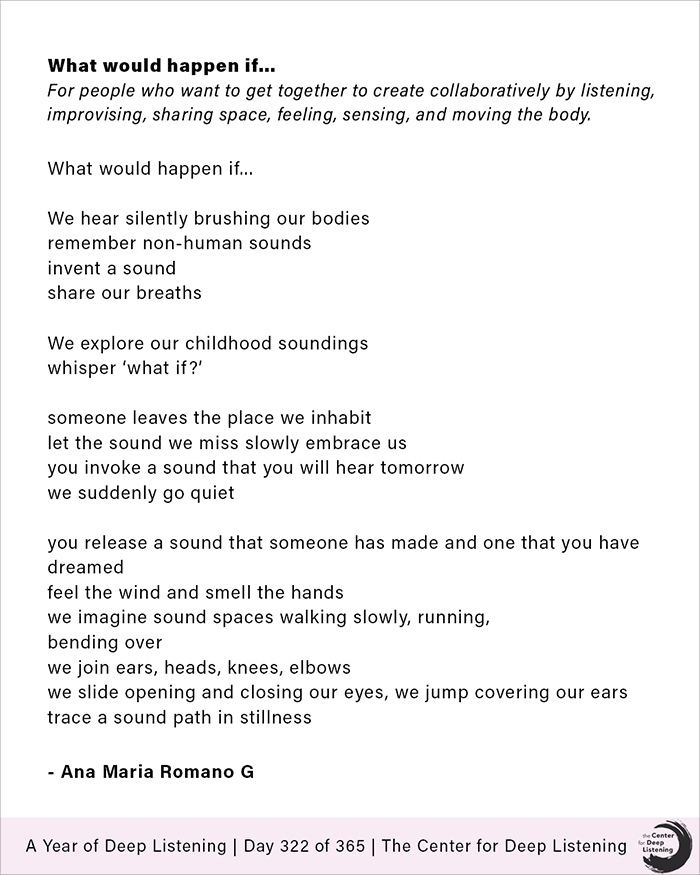
¿Qué pasaría si… / What would happen if…, by Ana Maria Romano G
Nota: Se invita a que el grupo sea muy diverso (intergeneracional, sexo, género, profesión, nacionalidad, neurodivergencia, origen étnico y social, etc.). Las fuentes sonoras pueden ser la voz, el cuerpo y/o un objeto, o un instrumento musical, con el que cada persona tenga un vínculo afectivo. Las acciones pueden hacerse en cualquier orden y escogiendo las que sean de interés entre les participantes, abriendo espacios de diálogo y construcción colectiva. La temporalidad se construye en tiempo real y en resonancia grupal. Las acciones pueden hacerse en parejas, tríos, grupo completo, etc.
Agradezco a Ximena Alarcón por la traducción. Además de llevar la partitura al inglés, durante el cálido proceso de la traducción tuve oportunidad de darme cuenta de la necesidad de hacer modificaciones en la versión en español que, sin duda, la enriquecieron
Note: The group is invited to be diverse (intergenerational, sex, gender, profession, nationality, neurodivergence, social and ethnic backgrounds etc.). The sound sources can be the voice, the body and/or an object with which each person has an affective bond (you might include conventional musical instruments too). Actions can be followed in any order and choosing those that are of interest among the participants, opening spaces for dialogue and collective construction. Temporality is constructed in real-time and in group resonance; actions might involve different groupings: couples, trios, the full group, etc.
I want to thank Ximena Alarcón for the translation. In addition to bringing the score into English, during the warm process of the translation I had the opportunity to realize the need to make changes to the Spanish version that, without a doubt, enriched it.
Ana María Romano Gómez is Colombian composer/interdisciplinary sound artist. Her creative interests stem in the intersection of gender, sound, technology and the political dimension of the creative. Her artistic works have been published in physical support and by several netlabels and have been featured in festivals in Latin America, Europe, North America and Asia. She has been working on the legacy of composer Jacqueline Nova and she is currently developing an investigation around the women protagonists of Latin American electronic music. She teaches at Universidad El Bosque and directs Festival En Tiempo Real.


